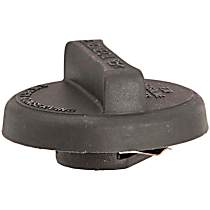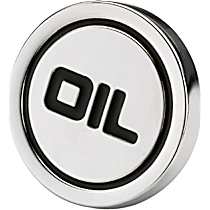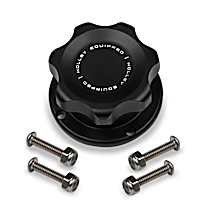{
"lazyNodes": false,
"abFitnotesFlag": false,
"abCrawlReviews": false,
"productOptionsCookie": false,
"orderDelayFlag": false,
"skipSessionCookie": false,
"covidMessage": false,
"fullTitleCookie": false,
"nrLoggerCookie": false,
"checkoutReviewCookie": false,
"productOptionSeqCookie": false,
"maintenanceFlag": false,
"bufferETACookie": false,
"multiShippingDiscountFlag": false,
"newFitmentFlag": false,
"surveyOptInFlag": false,
"crossSellFlag": false,
"skuMappingFlag": false,
"paySplitCookie": false,
"callDisableFlag": false,
"zipPaymentFlag": "u",
"hassleFreeReturn": false,
"lifetimeReplacement": false,
"cpn_off": false
}Lexus ES300 Oil Filler Caps
Shop Catalog
![]() WARNING: This product can expose you to chemical which is known to the State of California to cause cancer and birth defects or other reproductive harm. For more information go to www.P65Warnings.ca.gov.
WARNING: This product can expose you to chemical which is known to the State of California to cause cancer and birth defects or other reproductive harm. For more information go to www.P65Warnings.ca.gov.
![]() WARNING: This product can expose you to chemical which is known to the State of California to cause cancer and birth defects or other reproductive harm. For more information go to www.P65Warnings.ca.gov.
WARNING: This product can expose you to chemical which is known to the State of California to cause cancer and birth defects or other reproductive harm. For more information go to www.P65Warnings.ca.gov.
![]() WARNING: This product can expose you to chemical which is known to the State of California to cause cancer and birth defects or other reproductive harm. For more information go to www.P65Warnings.ca.gov.
WARNING: This product can expose you to chemical which is known to the State of California to cause cancer and birth defects or other reproductive harm. For more information go to www.P65Warnings.ca.gov.
![]() WARNING: This product can expose you to chemical which is known to the State of California to cause cancer and birth defects or other reproductive harm. For more information go to www.P65Warnings.ca.gov.
WARNING: This product can expose you to chemical which is known to the State of California to cause cancer and birth defects or other reproductive harm. For more information go to www.P65Warnings.ca.gov.
![]() WARNING: This product can expose you to chemical which is known to the State of California to cause cancer and birth defects or other reproductive harm. For more information go to www.P65Warnings.ca.gov.
WARNING: This product can expose you to chemical which is known to the State of California to cause cancer and birth defects or other reproductive harm. For more information go to www.P65Warnings.ca.gov.
![]() WARNING: This product can expose you to chemical which is known to the State of California to cause cancer and birth defects or other reproductive harm. For more information go to www.P65Warnings.ca.gov.
WARNING: This product can expose you to chemical which is known to the State of California to cause cancer and birth defects or other reproductive harm. For more information go to www.P65Warnings.ca.gov.
![]() WARNING: This product can expose you to chemical which is known to the State of California to cause cancer and birth defects or other reproductive harm. For more information go to www.P65Warnings.ca.gov.
WARNING: This product can expose you to chemical which is known to the State of California to cause cancer and birth defects or other reproductive harm. For more information go to www.P65Warnings.ca.gov.
![]() WARNING: This product can expose you to chemical which is known to the State of California to cause cancer and birth defects or other reproductive harm. For more information go to www.P65Warnings.ca.gov.
WARNING: This product can expose you to chemical which is known to the State of California to cause cancer and birth defects or other reproductive harm. For more information go to www.P65Warnings.ca.gov.
Popular Products
Customer Guides
Common Issues of a Toyota Camry Radiator Cap
A Toyota Camry radiator cap acts as a pressure valve for your car's radiator by sealing the engine coolant inside the tank. Since the radiator works as a heat exchanger for your car's engine, it needs assistance from the radiator cap, which then keeps the coolant in the radiator under a certain amount of pressure. The radiator cap, in short, plays a crucial role in the transfer of heat that come from the engine coolant into the air. So when your radiator cap becomes defective, it could cause a whole lot of trouble for you and your vehicle. Fortunately, you can avoid problems through proper troubleshooting. Here are some signs that your radiator cap is malfunctioning:
Malfunctioning lock
Your radiator cap gets to seal the engine coolant in the engine with the help of a lock. So when this lock starts acting up, it becomes extra difficult for your radiator cap to keep the engine coolant in the engine, given that it is also working against pressure. You have to make sure that the locks on your radiator cap are working properly. This way, you can be sure that the radiator cap won't easily get blown off from the engine.
Damaged pressure relief valve spring
The pressure relief valve spring works in coordination with the lock on your radiator cap. It compresses the lower seal, so you can easily close the radiator cap even if there is too much pressure in the cooling system. When you are having a hard time sealing your radiator cap, it could be caused by a defective pressure relief valve spring. And when this happens, it would be best if you can get a replacement immediately.
Worn-out seals
Your car's radiator cap is made with seal on its inner bottom part. These seal is supposed to keep the cap tightly closed so as to prevent the engine coolant from seeping through the gap and leaking out. One way to determine if the seal of your radiator cap is damaged is when the engine coolant or water is brought to a boil or when the substances flow out of the radiator.
Knowing that the radiator cap plays a huge part in the overall function of your engine and radiator, it is just necessary to perform an effective maintenance procedure that can keep it in good condition. There are a lot of ways that you can do to preserve your Toyota Camry radiator cap without the need to spend a lot of money and time. Here are some of the things you can do:
Watch out for rust and corrosion.
Rust and corrosion are among the most common reasons why the radiator cap gets defective. You have to be wary of these in order to keep your radiator cap in good condition. Rust and corrosion may be caused by various reasons, but the best way to prevent them is by removing rust on its first appearance. You can use a solvent or a steel wool in removing rust and preventing corrosion on the cap.
Assess the radiator cap to determine if it needs replacement.
Every one or two years, your radiator cap might need replacement. Its integrity could decrease after several months, and it might not be able to handle pressure that well. It can be of great help if you assess the condition of your radiator cap every once in a while to know whether some parts are malfunctioning or if the entire cap is in need of replacement.
Get a radiator cap that can handle pressure.
When the time comes that you get a replacement for your worn out radiator cap, keep in mind that the new one should be able to handle the same amount of pressure absorbed by your previous radiator cap. It is not advisable to get a new cap that can only handle less pressure than the previous one could. This may affect the functionality of the cap and might also cause troubles after a while.
Check the valve spring often.
The valve spring is an important component of the radiator cap as it takes part in the radiator cap's ability to handle pressure properly without allowing the engine coolant or water to leak from the reservoir. You have to set time for a complete inspection of the valve spring on your radiator cap, so you could know if it is still capable of preventing the coolant from spilling, especially if there is too much pressure on the radiator.

















